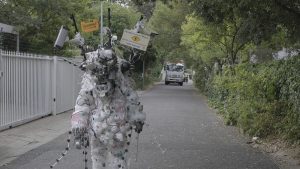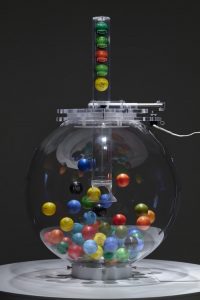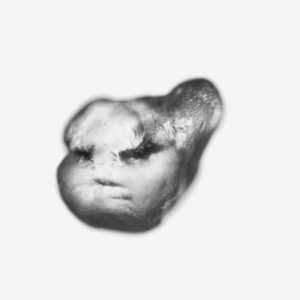In a bid to blast the clouds out of the sky for the Beijing Olympics last year, China’s Weather Modification Office seeded clouds with chemicals. This Summer at the Design Interactions (RCA) graduation show, Zoe Papadopoulou and Cat Kramer proposed a much bolder and poetical take on the cloud seeding technology.
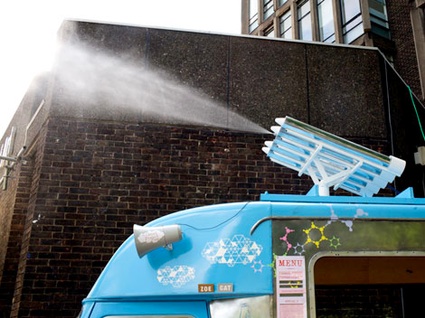 Photo by HaYeon Yoo
Photo by HaYeon Yoo
Their Cloud Project takes the shape of a retro van selling ice-cream flavored clouds. An industrial-strength water spray mounted on top of the ice cream van would shoot a mix of liquid nitrogen and ice-cream into the atmosphere as a fine spray, leading to flavored condensation nuclei that will seed ice-cream clouds and give them the flavour of your choice.
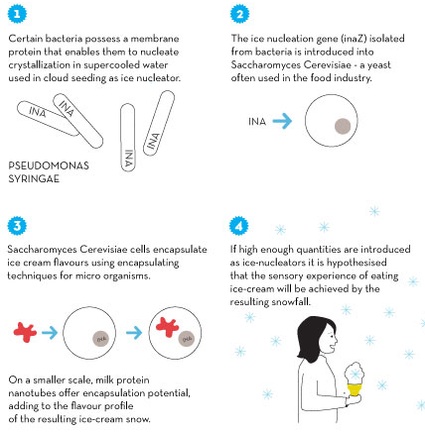 Cloud seeding with bacteria to make rain snow ice cream
Cloud seeding with bacteria to make rain snow ice cream
As scientist and emerging technologies advisor Andrew Maynard wrote on his blog, the gap between the designers’ concept and the current state of nanotechnology research is still fairly large. What was read instead was the group of experts lined up to give talks and discuss with the public in the ice cream van. Ice cream was in fact the bait that lured passersby into having conversations about nanotechnology, geoengineering and emerging technologies in general.
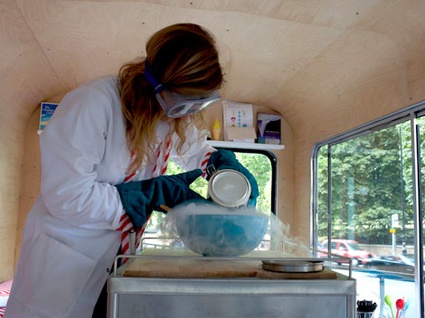 Image The Cloud Project
Image The Cloud Project
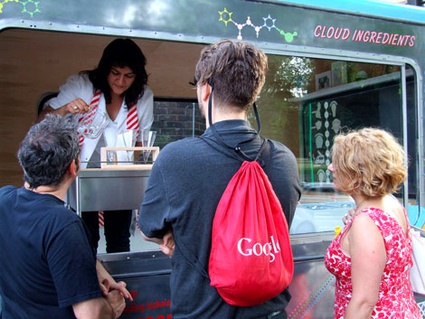 Image The Cloud Project
Image The Cloud Project
Real ice cream was handed out along with explanations about the manufacturing process and the creation of nano ice cream crystals. The designers and scientists invited customers to ask questions and reflect on issues such as: Does using nanotechnology to control climate come without any caveat? What could be the long-tern effect of these technologies on the environment? And how about the food we are buying today? Should we embrace GM food? Should we jump on supercarrots genetically modified to contain more calcium?
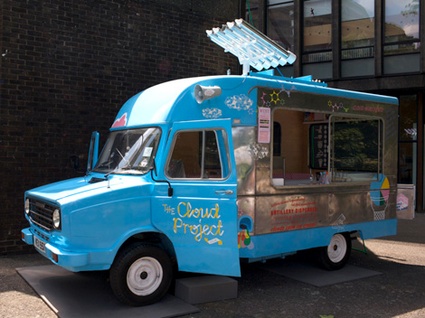 Image The Cloud Project
Image The Cloud Project
As the designers explain: Developments in nanotechnology and planetary-scale engineering point to new possibilities for us to conform the global environment to our needs. These advances combined with a dream to make clouds snow ice cream have inspired a series of experiments that look at ways to alter the composition of clouds to make new and delicious sensory experiences. Using ice-cream as a catalyst for interesting dialogue, the project’s focus is to welcome people into a mobile space that sits outside institutions, letting new audiences experience and imagine emerging scientific developments and their consequences.



